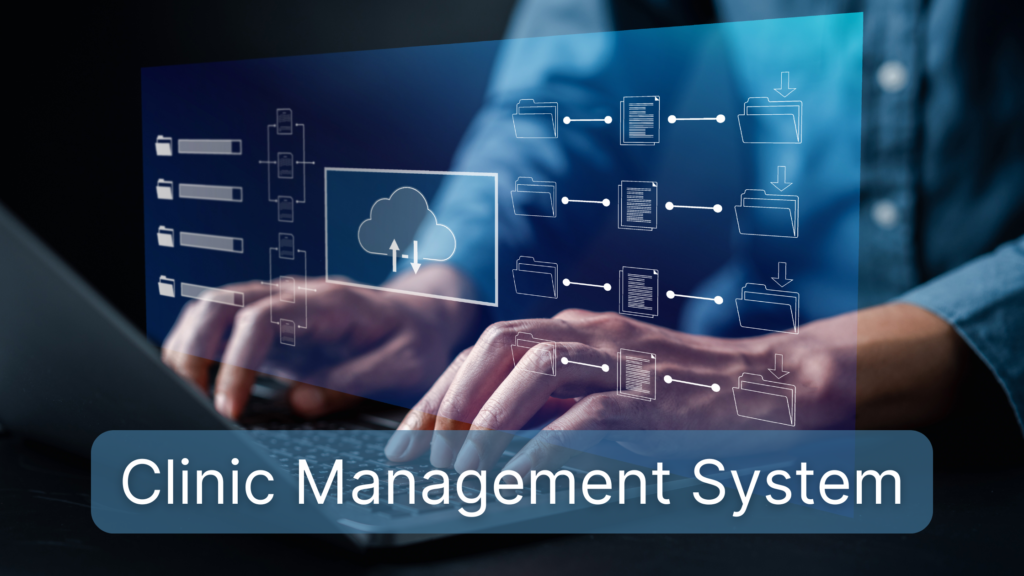Are you tired of dealing with lost patient records, long queues, and manual appointment scheduling? Do billing errors, misplaced files, and administrative backlogs slow down your clinic’s efficiency? If so, it may be time to invest in a clinic management system (CMS). With the growing demand for fast, seamless, and patient-friendly healthcare services, Filipino clinics, hospitals, and private practitioners need digital solutions to stay competitive.
A clinic management system helps streamline patient record management, scheduling, billing, and even telemedicine operations, reducing manual errors and improving efficiency. According to Health IT Analytics, clinics that switch to digital systems experience a 35% reduction in administrative workload and a 25% improvement in patient satisfaction. Meanwhile, JAMIA found that EMR-integrated systems reduce medication errors by 55%, ensuring more accurate diagnoses and treatment plans.
With patient expectations rising, the shift to digital healthcare solutions is no longer optional—it’s essential. A CMS enhances workflow, reduces paperwork, and ensures smooth clinic operations, allowing doctors and staff to focus on patient care instead of administrative burdens. Let’s explore the benefits of a clinic management system and how it can help Filipino healthcare providers improve efficiency, reduce errors, and offer better patient experiences.
What is a Clinic Management System?
A clinic management system (CMS) is a digital solution designed to help healthcare providers manage patient records, appointment scheduling, billing, inventory, and telemedicine services in one platform. Instead of juggling paper records and manual processes, clinics can centralize everything into one efficient system. Whether you’re a private practitioner, a hospital administrator, or a telemedicine provider, a CMS helps you reduce paperwork, automate tasks, and focus on patient care.
Key Features of a Clinic Management System
- Patient Record Management – Securely store and access medical histories, prescriptions, and treatment plans.
- Appointment Scheduling – Automate bookings, send reminders, and reduce no-shows.
- Billing and Insurance Processing – Streamline invoicing, claims, and payments.
- Lab Result Integration – Upload and retrieve lab reports in real-time.
- Telemedicine Support – Conduct virtual consultations with integrated e-prescriptions.
Why Filipino Clinics Need a Clinic Management System
1. Faster and More Efficient Patient Management
A clinic management system saves time by automating manual tasks like patient registration, appointment scheduling, and follow-ups. According to Health IT Analytics, clinics using digital systems reduce scheduling errors by 50%, ensuring that patients receive timely care. By eliminating manual paperwork, doctors can spend more time with patients and less time on administrative tasks.
2. Reduced Errors and Better Patient Safety
Mistakes in prescriptions, lost lab reports, or misfiled patient records can have serious consequences. A study from JAMIAfound that digital medical records reduce medication errors by 55%, significantly improving patient safety. With an EMR-integrated CMS, doctors have instant access to accurate patient histories, allowing them to make informed decisions faster.
3. Improved Revenue and Financial Management
Billing errors and delayed insurance claims can disrupt clinic cash flow. Clinics using automated billing systemsexperience a 20% increase in revenue collection, according to a report in Healthcare Financial Management. A clinic management system automates invoicing, tracks outstanding balances, and ensures that insurance claims are processed correctly, reducing lost revenue.
4. Better Compliance and Data Security
Data security is a major concern for healthcare providers. A World Health Organization (WHO) study found that Privacy Act-compliant CMS solutions help clinics prevent unauthorized access to patient records, reducing the risk of data breaches. Digital platforms offer encryption, multi-factor authentication, and cloud backups, ensuring that patient data remains protected.
5. Scalability and Remote Access
With cloud-based CMS platforms, doctors and administrators can access patient records, schedules, and reports from any device. This flexibility is especially beneficial for telemedicine providers and multi-location clinics, enabling seamless collaboration and real-time updates.
Real-World Impact: How a Clinic Management System Transforms Healthcare
The adoption of clinic management systems (CMS) has shown promising results in improving healthcare efficiency in the Philippines. For example, the Community Health Information Tracking System (CHITS), an electronic health information system developed in the country, has enhanced data collection and clinic appointment management in community health centers. Studies show that CHITS has helped streamline patient record management, improving decision-making and operational efficiency in local healthcare settings. (Source)
Similarly, the Satmed eHealth Platform was successfully implemented at the Buda Community Healthcare Centre in Mindanao, enabling better patient data management, remote consultations, and access to medical expertise worldwide. With telemedicine integration and digital record-keeping, clinics using such systems have reported improved patient outcomes and reduced administrative burdens. (Source)
As more healthcare providers in the Philippines embrace digital transformation, the shift to paperless clinic management systems continues to enhance patient care, reduce errors, and lower operational costs, making healthcare delivery more efficient and accessible.
How to Choose the Right Clinic Management System
1. Compliance with Healthcare Regulations
Ensure that the CMS is Privacy Act and GDPR-compliant to protect patient privacy and data security.
2. Integration with EMR and Billing Systems
A good clinic management system should seamlessly integrate electronic medical records, insurance claims, and financial reports.
3. User-Friendly Interface
Doctors and clinic staff should be able to navigate the system easily without extensive training.
4. Cloud-Based and Mobile Accessibility
Having remote access to schedules, patient history, and billing data allows for greater flexibility and efficiency.
5. Reliable Customer Support and Training
A CMS provider should offer 24/7 support and ongoing training to ensure a smooth transition for clinic staff.
How to Implement a Clinic Management System in Your Practice
- Assess Your Needs – Identify the key challenges your clinic faces and the features that would best address them.
- Research CMS Providers – Compare different platforms based on features, pricing, and user reviews.
- Request a Demo – Experience how the system works before committing. Try DoktorEMR’s free demo to see how it fits your practice.
- Train Your Staff – Ensure that doctors, nurses, and administrative personnel are comfortable using the system.
- Monitor and Optimize – Continuously assess system performance and make necessary adjustments to improve efficiency.
Final Thoughts: Is a Clinic Management System Right for You?
If your clinic still relies on manual records, slow administrative processes, and outdated billing systems, it’s time to upgrade. Research shows that clinic management systems improve efficiency, enhance patient safety, and boost financial performance. With digital transformation becoming a necessity, Filipino clinics and hospitals must invest in CMS solutions to remain competitive and provide high-quality, seamless healthcare services.
Are you ready to make the switch? Learn more about how DoktorEMR can help streamline your clinic’s operations. Want to see it in action? Watch our video tutorials or schedule a free demo today and take your clinic to the next level.





